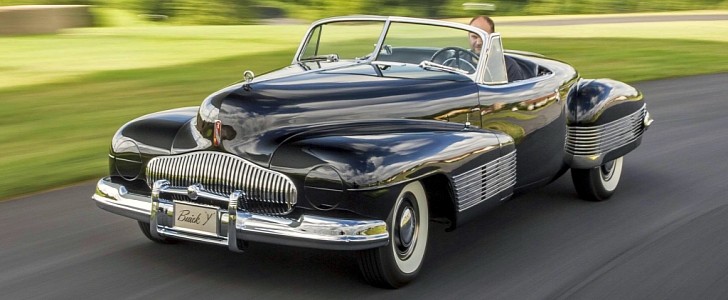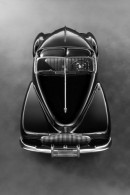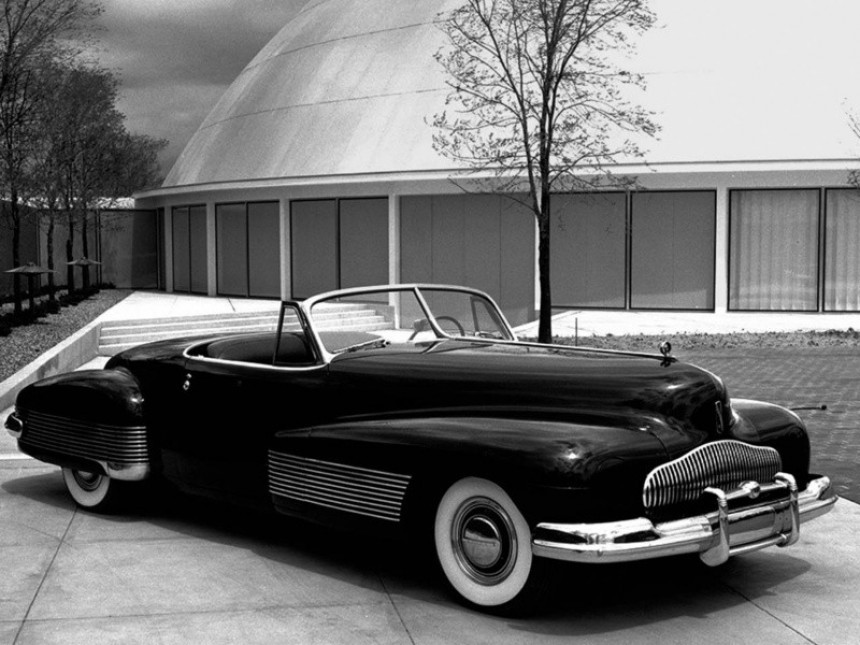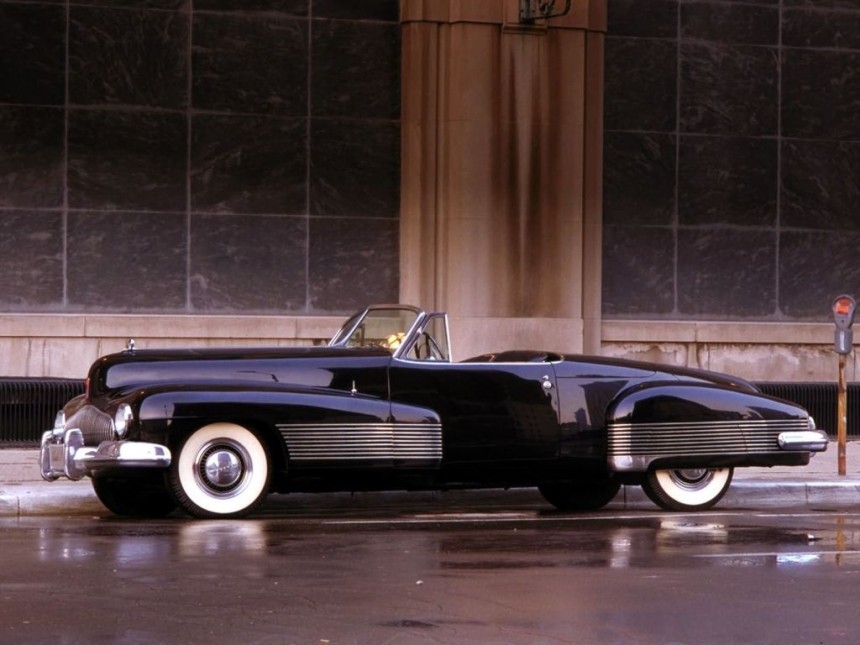If you had a DeLorean time-traveling machine with a thumpin’ great flux capacitor that could take you back to the ‘30s, you wouldn’t like it because of the Great Depression. The most popular cars available in the United States back then weren’t exactly on the bleeding edge of engineering or styling, but there are a few exceptions to this rule.
The Ford Motor Company democratized the V8 engine with the flatty, the Pierce-Arrow Silver Arrow had streamlined bodywork that would influence the Chrysler Airflow, the Cord 810 was the first passenger car to feature hidden-style headlights, and the list goes on and on. Across the blue pond we call the Atlantic Ocean, engineers and designers were hard at work too.
Citroen took front-wheel-drive into the mainstream with the Traction Avant, a bad guy by the name of Adolf Hitler wanted a people’s car that Ferdinand Porsche shamelessly misappropriated from Czech automaker Tatra, and Bugatti stunned the world with the aluminum-bodied Type 57 SC Atlantic.
As you can tell, exceptions come in many flavors that attract just as many enthusiasts. The car that does it for me the most is the Buick Y-Job, a fully functional concept that paved the way for every single concept ever since.
Harley Earl, the first vice prez in charge of design at General Motors, is the mastermind behind the innovative design study. Born in Hollywood to a coachbuilding father, Earl is also responsible for starting the Corvette-previewing Project Opel. By the way, Earl is also the man who approved tailfins into production, a styling trait attributed to Frank Hershey.
Developed specifically to reignite interest in the automobile as the Great Depression was coming to a close, the Y-Job had a somewhat curious design principle. More to the point, Earl believed that oblongs are universally more attractive than squares. George Snyder and Joe Shemansky sketched the vehicle on a paper, and the mechanical details were sorted out by Charlie Chayne. The chief engineer of the Buick division settled for a Buick Century chassis that was stretched to accommodate the Y-Job’s low height.
Almost 20 feet long and 58 inches tall, the concept was modeled in clay by Jock Park in the first half of 1938. Fabricated by Vince Kaptur Sr. under the supervision of Charlie Chayne, the boattail-like convertible was noticeably lower than production cars from that era thanks to 13-inch wheels instead of the 15s the Century used to feature. Finished in steel even though aluminum would’ve been appropriate due to the aircraft-style pneumatic brakes, the Y-Job wowed the public with its bite-the-back-of-your-hand pretty looks.
Unveiled in 1939 with a rather catchy slogan (“the car of the future”), the forward-looking machine incorporated hideaway lamps, an electric-hydraulic top, power windows, and an asymmetric instrument panel. Even the smallest of touches had a tremendous impact on the automotive industry, small details that include the flush door handles and hidden trunk-release handle.
Named so because Y was often utilized in the aeronautical industry, the Y-Job is rocking fenders that flow seamlessly into the doors instead of running boards. The wrap-around bumpers, horizontal grille, and the canvas top’s metal boot are highlights in their own right, along with the straight-eight motor that was bumped from 141 horsepower in the Century to 200 HP.
Originally fitted with a column-shifted manual, the Y-Job received a Dynaflow transmission the following decade at the request of Harley Earl. The mastermind himself drove the concept on public roads a lot following the start of World War II. During his tenure, the car received a few improvements that include hydraulic brakes, rear-wheel fender skirts, pushbuttons instead of flush door handles, and chrome bumpers from a 1942 model year Buick.
Indirectly replaced by the XP-8 Le Sabre concept from 1951, the Buick Y-Job was eventually rendered a museum piece. The General Motors Design Center in Warren, Michigan became the concept’s new home in 1993, and the concept was inducted into the National Historic Vehicle Register in 2016.
An honored member of the pantheon of great automotive designs, the Y-Job is an influential piece of automotive history that still looks ravishingly good after more than eight decades since GM first revealed it to the public.
Citroen took front-wheel-drive into the mainstream with the Traction Avant, a bad guy by the name of Adolf Hitler wanted a people’s car that Ferdinand Porsche shamelessly misappropriated from Czech automaker Tatra, and Bugatti stunned the world with the aluminum-bodied Type 57 SC Atlantic.
As you can tell, exceptions come in many flavors that attract just as many enthusiasts. The car that does it for me the most is the Buick Y-Job, a fully functional concept that paved the way for every single concept ever since.
Harley Earl, the first vice prez in charge of design at General Motors, is the mastermind behind the innovative design study. Born in Hollywood to a coachbuilding father, Earl is also responsible for starting the Corvette-previewing Project Opel. By the way, Earl is also the man who approved tailfins into production, a styling trait attributed to Frank Hershey.
Almost 20 feet long and 58 inches tall, the concept was modeled in clay by Jock Park in the first half of 1938. Fabricated by Vince Kaptur Sr. under the supervision of Charlie Chayne, the boattail-like convertible was noticeably lower than production cars from that era thanks to 13-inch wheels instead of the 15s the Century used to feature. Finished in steel even though aluminum would’ve been appropriate due to the aircraft-style pneumatic brakes, the Y-Job wowed the public with its bite-the-back-of-your-hand pretty looks.
Unveiled in 1939 with a rather catchy slogan (“the car of the future”), the forward-looking machine incorporated hideaway lamps, an electric-hydraulic top, power windows, and an asymmetric instrument panel. Even the smallest of touches had a tremendous impact on the automotive industry, small details that include the flush door handles and hidden trunk-release handle.
Named so because Y was often utilized in the aeronautical industry, the Y-Job is rocking fenders that flow seamlessly into the doors instead of running boards. The wrap-around bumpers, horizontal grille, and the canvas top’s metal boot are highlights in their own right, along with the straight-eight motor that was bumped from 141 horsepower in the Century to 200 HP.
Indirectly replaced by the XP-8 Le Sabre concept from 1951, the Buick Y-Job was eventually rendered a museum piece. The General Motors Design Center in Warren, Michigan became the concept’s new home in 1993, and the concept was inducted into the National Historic Vehicle Register in 2016.
An honored member of the pantheon of great automotive designs, the Y-Job is an influential piece of automotive history that still looks ravishingly good after more than eight decades since GM first revealed it to the public.

















